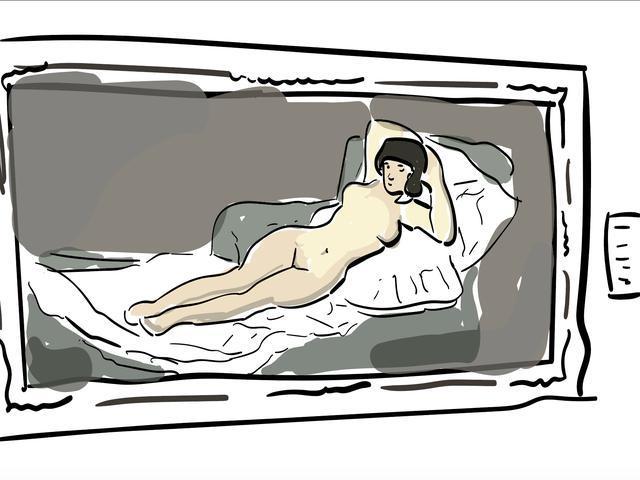The naked maja

"The Naked Maja" is a renowned painting by the Spanish artist Francisco de Goya, created before 1800. This masterpiece is part of a pair, along with "La Maja Vestida," which was painted between 1800 and 1808. The subject of both paintings is a captivating woman, depicted in a reclining position on a bed, gazing directly at the viewer. Despite being a real woman from Goya's time, she was commonly referred to as "The Gypsy." The identity of the woman has been a subject of speculation, with some suggesting she may be the Duchess of Alba or Pepita Tudó, the lover and later wife of Manuel Godoy, who owned the paintings.
The history of "The Naked Maja" is filled with intrigue and controversy. In 1807, the painting was confiscated from Godoy by Fernando VII, and in 1814, the Inquisition deemed it obscene and initiated a trial against Goya. The painter was ultimately acquitted, but the painting was kept out of public view until the early 20th century. Despite the challenges it faced, "The Naked Maja" has endured as a symbol of artistic expression and has inspired other works, such as Édouard Manet's "Olympia."
The painting's composition and the woman's direct gaze create a sense of intimacy and intrigue, inviting viewers to contemplate the beauty and mystery of the subject. Goya's skillful use of light and shadow, as well as his attention to detail in capturing the woman's form, make "The Naked Maja" a captivating piece of art that continues to captivate audiences around the world.
Visitors to museums or art galleries where "The Naked Maja" is displayed have the opportunity to immerse themselves in the rich history and artistic legacy of this iconic painting. Whether admiring it for its technical mastery or pondering the enigmatic identity of the woman portrayed, experiencing "The Naked Maja" in person is sure to leave a lasting impression on art enthusiasts and history buffs alike.
© ChatGPT 3.5
On June 15, 1930, the Spanish Post Office issued stamps (values of 1, 4 and 10 pesetas) engraved by José Luis López Sánchez-Toda with the motif of La Maja Naked, being the first time that a female nude appeared in philately. , with great scandal